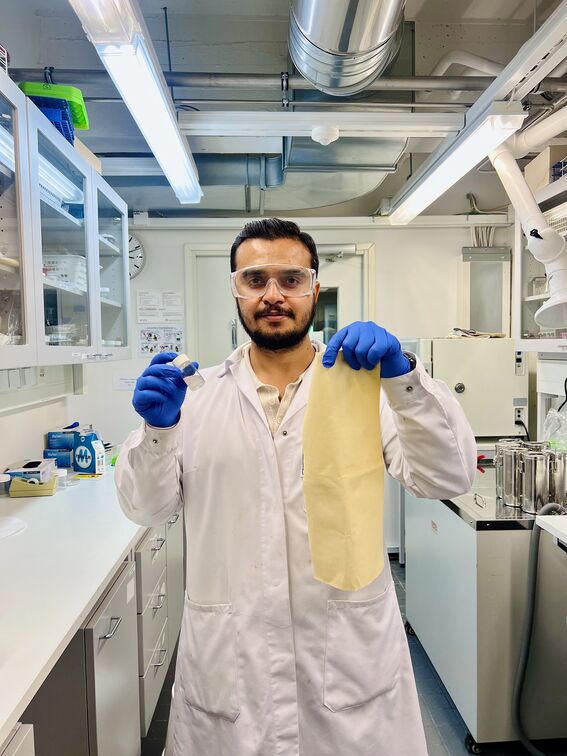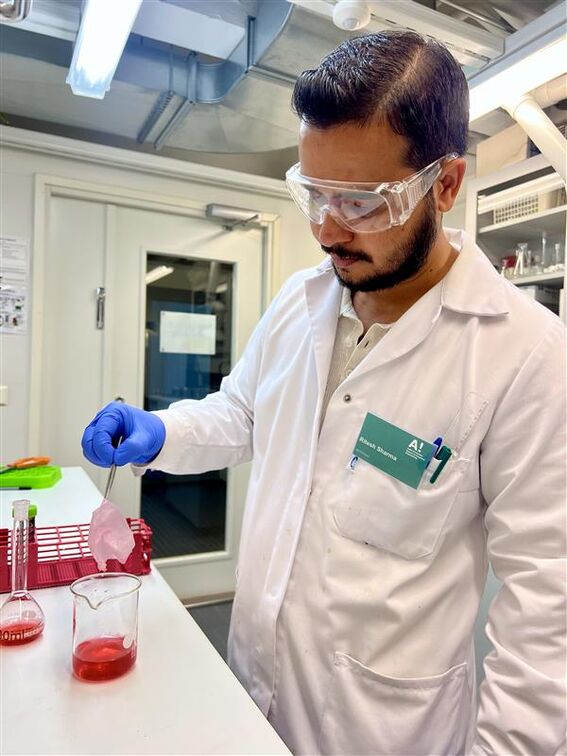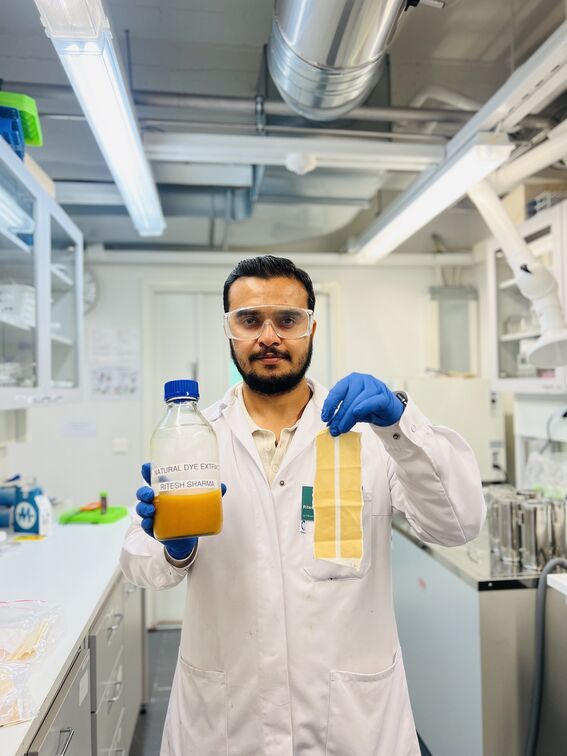Agro-Waste for a Greener Future, Rethinking Textile Dyeing and Printing: Ritesh Sharma


At Aalto University in Finland, PhD scholar Ritesh Sharma is working on a new approach that uses Agro waste as a source of natural colorants, potentially reshaping the upcoming of textile dyeing and printing. Ritesh is conducting his doctoral research in the Textile Chemistry group at the Department of Bioproducts and Biosystems, under the FinnCERES flagship and the PEFF (Plant-based Extracts for Functionalization of Cellulosic Fibers) project, a collaboration between VTT Finland and Aalto University. His work focuses on extracting bioactive compounds, particularly natural dyes, from residues such as onion peels and berry pomace. Instead of treating these byproducts as waste, his research seeks to valorize them into functional resources for textiles and cellulosic films.

“Natural dyes are not only sustainable alternatives to synthetic dyes, but they also bring added functionalities,” Ritesh explains. “They can impart UV protection, antibacterial activity, and antioxidant properties, offering multiple benefits alongside coloration. We are also investigating whether these bio-based colorants are dermatologically safe, ensuring that they are suitable for direct skin contact and safe for consumers.”

Beyond textile dyeing, one major avenue where natural dyes could have a transformative impact is in textile printing, an industry that is still heavily reliant on petroleum-derived binders and auxiliaries. To overcome this challenge, Ritesh has developed a fully biobased binder system that works effectively with a wide range of natural dyes. These new formulations not only ensure excellent color fastness, wash durability, and print quality, but also eliminate petroleum-derived ingredients. “This development shows that we can achieve both performance and sustainability in textile printing,” Ritesh emphasizes.

This research goes beyond simply reducing dependence on synthetic chemicals; it highlights how agricultural waste can be transformed into a valuable feedstock for high-performance textiles. Ultimately, Ritesh’s goal is to contribute to a future of safer, circular, and more sustainable textile production, a future where what was once waste becomes a resource, driving innovation in green materials.
Read more news
Courses for doctoral students in period III (2025-2026)
Period III runs from 5 January to 22 February 2026.
The Industry Project course is at the heart of the IDBM Master's program
The multidisciplinary master's program in International Design Business Management (IDBM) celebrates its 30th anniversary this year
The pilot project for direct article delivery from the National Repository Library ends
Aalto University has been participated in the pilot project for direct article delivery with the National Repository Library and Kopiosto from 2023 to 2025. The pilot ends on 19th December.






